
Five CEAT researchers receive NSF CAREER awards
Monday, September 25, 2023
Media Contact: Kristi Wheeler | Manager, CEAT Marketing and Communications | 405-744-5831 | kristi.wheeler@okstate.edu
The College of Engineering, Architecture and Technology at Oklahoma State University has always been home to researchers and innovators who are providing solutions to some of the world’s biggest challenges.
These researchers have garnered recognition and support from prominent entities such as the National Science Foundation (NSF). However, 2023 has seen a record five CEAT recipients of the NSF’s Faculty Early Career Development Program (CAREER) awards.
The CAREER Award offers the NSF’s most prestigious awards in support of early career faculty who can serve as academic role models in research and education and lead advances in their department or organization’s mission.
Dr. Aurelie Azoug
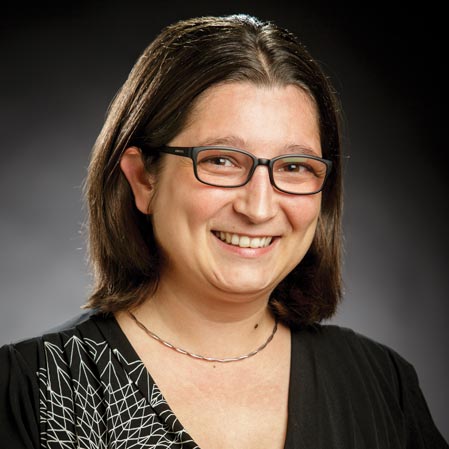
Dr. Aurelie Azoug has been selected to receive an Early CAREER Award from the NSF of nearly $600,000 to conduct research in the area of dissipation mechanisms in smart elastomers.
This research allows Azoug, an assistant professor in the School of Mechanical and Aerospace Engineering, to better understand the mechanisms leading to energy dissipation of smart elastomers and thus better control those mechanisms for future applications.
“This award is very validating,” Azoug said. “It’s a recognition that says, ‘Hey, you’re doing good science and we’d like to see you continue down this path and see where you can take this research.’”
These liquid crystal elastomers are constructed so that while they contain a highly organized structure, at the molecular level, they retain a soft and stretchy behavior which allows for a wider variety of applications. They are also smart, which means they react to changes in their environment, such as thermal or mechanical changes.
Research into smart elastomers is relatively new and has primarily been focused on the creation of these materials, both from a chemical and physical standpoint. There has, up to now, been little research into the properties of these materials and the secondary characteristics that may be useful to researchers and consumers.
Because of the organized structure, there is a dissipation of energy within the material when it deforms. These dissipation mechanisms could significantly improve the performance of dampers used in the reduction of vibrations or noise. If researchers better understood how these dissipations occur, they could better curtail their construction for specific purposes.
“That’s the premise of this proposal,” Azoug said. “Can we understand exactly what is happening in the material during certain environmental or mechanical changes? If so, we can then use that information to apply those characteristics when we do and do not want those dissipation mechanisms occurring.”
Azoug will also explore the methods by which these materials are physically solidified during the curing process. Currently, many elastomers are cured using UV light sources, as it is the fastest and most controllable curing method. Azoug and her team wish to explore how to optimize curing and determine whether curing parameters could play a role in deciding some of the dissipation characteristics of these materials.
She believes by understanding these behaviors at a molecular level, these smart elastomers could be used in composite materials for applications in different areas such as energy harvesting, health care and soft robotics.
“A perfect example of application would be the use of these materials in the production of vibration dampening materials to be used inside a football helmet,” Azoug said. “If we can identify an elastomer that is very efficient in the dampening of shocks, we could produce a new composite material that could line the inside of a football helmet and produce a larger impact on the health of athletes at a lower cost.”
The NSF CAREER award also requires an education component for each proposal, and Azoug’s focus is one she is deeply passionate about: introducing young women from kindergarten to high school to STEM fields.
The researcher and her team plan to further develop outreach activities they are already conducting, such as an introduction to soft robotics using remarkably simple soft robots made of elastomer that students could manipulate and control through coding.
“I believe it is paramount for these young women to be exposed to these areas of science and to have female engineers and scientists teach them,” Azoug said. “I want girls to have the opportunity to see a woman be successful and have a career in engineering. I want them to know that pursuing that type of career is OK and that they can do it, too.”
Dr. John O’Hara
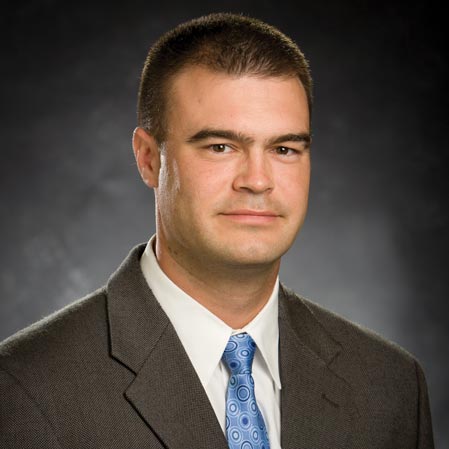
Oklahoma State University will continue to be an innovator in next generation communications in part because of a Faculty Early CAREER Award from the NSF given to Dr. John O’Hara, an assistant professor in the School of Electrical and Computer Engineering.
O’Hara will be researching solutions to several challenges surrounding wireless backhaul for 6G wireless communication. Backhaul refers to the large bandwidth, usually fiber optic, connection that carries massive amounts of data from numerous wireless and static communication sites to a core network.
“Think of it as a large pipe that connects a lot of smaller pipes to a large collection site,” O’Hara said. “Next generation, 6G communication is likely going to have data transfer rates of up to 1 terabyte per second and we don’t have the system in place to transmit that amount of data wirelessly.”
O’Hara and his team are developing a system that will use terahertz waves as the vehicle for data transmission. Terahertz waves can carry vast amounts of data but behave much like a laser and are subsequently prone to some of the same challenges that lasers face.
Pointing is a major issue with lasers and an unknown factor when dealing with terahertz transmission. If the signal or receiver shifts a fraction of a degree, will that cause a complete loss of signal? If so, what solutions are the most practical to employ?
The team plans to use intelligent reflective surfaces as multifunctional beam controllers. The combination of terahertz and intelligent reflectors allows for the transmission of high bandwidth wireless signals while overcoming the difficulties of using terahertz waves in an uncontrolled environment.
Although it may sound like a straightforward solution, the challenges the team will face require innovative technologies and science to be developed to solve them. Wave fluctuation, environmental variables and data loss during transmission are just a few challenges that the team will encounter.
“Terahertz and next gen communication has a fairly well-defined vision,” O’Hara said. “But not a lot of demonstration to this point. This next generation of wireless communication technology is still in its infancy. It’s like a baby elephant, it may be a baby, but it’s a big baby and will require a lot of effort to tame.”
The research team has already begun experimenting with data transmission in an outdoor environment. To date, they have been able to send data over a stretch of 340 meters and are aiming at over a kilometer for their next milestone.
The goal is to wirelessly transmit an ultra-high-definition video that is delivered via fiber optic cable to the terahertz broadcast system; receive it over a long range through atmospheric conditions; and then convert it back to fiber optic cable for viewing.
If successful, this will serve as a proof-of-concept foundation for 6G wireless communication systems, demonstrate new concepts in intelligent reflective surfaces and reveal the new science governing such systems.
“A distance of 182 meters might not seem like a lot,” O’Hara said. “But that has given us invaluable data and experience that we can use as we lengthen the distance between transmission and receiving points.”
O’Hara and his team also recognize the significant societal impact next generation communications will have, specifically in rural communities that may not have the bandwidth.
While being a respected researcher, O’Hara values the recognition of the NSF CAREER award and attributes his success to an amazing support system and a touch of serendipity.
“I call it luck,” O’Hara said. “I’ve been very fortunate to have been surrounded with immense support and great colleagues and it’s a bit serendipitous, just be at the right place at the right time and capitalize on opportunities that you’re afforded.”
Dr. Marimuthu Andiappan
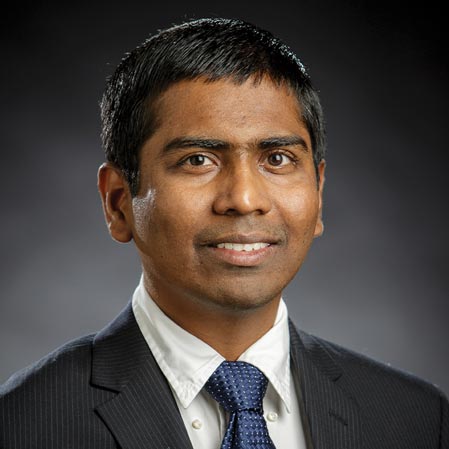
Dr. Marimuthu Andiappan, an assistant professor in the School of Chemical Engineering, has received an Early CAREER Award from the NSF for his research on carbon-carbon and carbon-nitrogen cross-coupling reactions.
These types of reactions are prevalent in chemical and pharmaceutical industries for making conjugated polymers, agrochemicals and pharmaceuticals, such as Tylenol and ibuprofen.
However, current technology and industry processes use expensive, rare palladium-based catalysts and require high-temperature and atmospheric pressure conditions to produce the intended results. These processes also produce a large amount of waste before the product is yielded to the measure of 25 to 100 kilograms of waste for every one kilogram of product yielded.
Andiappan and his team’s focus is three-pronged: replace the expensive and rare palladium catalysts with inexpensive, Earth-abundant copper or iron-based photocatalysts. Because of new photocatalysts, the reactions would not require high heat or atmospheric pressure conditions and would rely on simple LED lights producing visible light. Finally, the use of these heterogeneous photocatalysts allows the reaction and procurement of the product to take place in a single, fluid chamber and makes the current processes used to separate the product from the catalyst unnecessary.
“The three steps in this proposal would allow us to minimize or avoid the carbon footprint of these critical processes,” Andiappan said. “Eventually, we hope that these processes will become net carbon zero processes.”
These reactions rely heavily on the use of fossil fuels and other nonrenewable energy sources to yield the important end products. However, proposed changes allows engineers to carry out these reactions using the electrical grid already in place, and they could begin to explore alternate energy sources, such as wind or solar energy.
“Efforts like this proposal will allow us to develop these new technologies and processes at the requisite pace, so that we can develop a workforce that is prepared for the transition to a heavier reliance on renewable and sustainable energy sources,” Andiappan said.
The processes currently used in industry are the same processes that have been used for decades and continue to be taught in classrooms to future engineers and scientists. As part of his award, Andiappan hopes to change that by integrating his research into the curriculum at OSU via a new elective course for students in CEAT and other interested departments across campus.
“If we were to integrate a new course focused on these new processes and technologies into our curriculum, OSU students would graduate with a more competitive and well-rounded skillset than perhaps a student from a different university,” Andiappan said. “That way we can supply more skilled engineers and scientists for the state of Oklahoma and the entire U.S.”
As he and his team embark on the next steps in their research, Andiappan reflected on the milestone of receiving an NSF Early CAREER award.
“It’s an amazing recognition to receive. It is an amazing feeling to have our research recognized by our peers and national agencies like the National Science Foundation,” Andiappan said. “It has provided a lot of confidence to me and my students to move forward and continue this amazing research.”
Dr. Nicoletta Fala
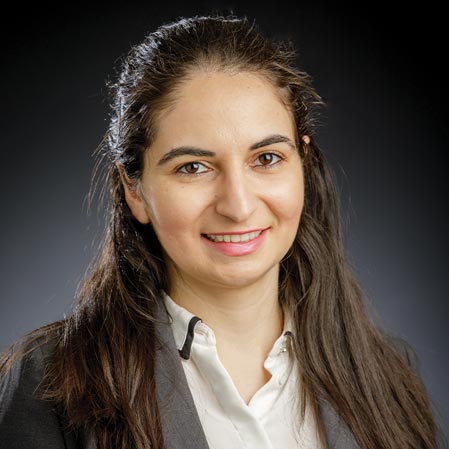
Dr. Nicoletta Fala, assistant professor of mechanical and aerospace engineering at OSU, has earned an Early CAREER Award from the NSF for her research on the use of virtual reality in flight simulation to advance and promote research and positive skill transfer in enhanced flight training.
The College of Engineering, Architecture and Technology researcher believes standard flight training and research could be augmented and advanced using VR flight simulation hardware and software applications, which could have a significant impact in addressing the world’s ongoing pilot shortages.
“If we have the right virtual reality software and curriculum design, we could use that to maintain pilot proficiencies and skills, thus reducing the cost of training and obstacles to entry into flight-related research, as well as accidents occurring due to lapses in training,” Fala said.
She believes that, while not all skills can be learned via VR training, there are a plethora of crucial flight skills that could be initially introduced and trained using environments outside of actual aircraft and traditional flight simulators.
“Current in-aircraft and simulated flight training requires resources that are both expensive and need a large and specific footprint to operate,” Fala said. “However, if a VR training simulator is proven to be just as effective as traditional methods of instruction, we could significantly reduce the cost to train both new and current pilots.”
Fala hypothesizes flight skills that require more visual fidelity, as opposed to movement fidelity, could be adaptable to a VR environment. She noticed during a preliminary experiment that when her research students were asked to complete a “turn around a point” maneuver — used to train students to account for wind in their control inputs when circling a stationary point — they struggled in a traditional flight simulator environment due to a lack of field of view. However, when asked to complete the same maneuver in a VR environment, the students could complete the task more easily because of VR’s ability to produce a 360-degree view for users.
While this particular task was deemed a “win” for the VR environment, Fala and her team have identified challenges that students, instructors and current pilots could face using this new simulation approach. Pilot interactions, whether with an instructor or avionics, will face challenges in a VR environment.
“In order to make this project successful, the first thing we must focus on is overcoming the challenges we’ve identified, such as developing a way to overcome student-instructor interactions and communication in the training environment,” Fala said. “Also, many modern aircraft have digital avionics which require pilot interaction and input to operate, which can be harder to replicate in a virtual environment.”
The NSF CAREER Award will allow Fala and her team to overcome and answer those challenges and questions encountered while creating and developing a viable way for new and current pilots alike to augment their training. It will make it easier to grow the pilot population and bolster recurrent training in a more cost- and time-efficient manner.
“Receiving this award has been a goal of mine since I was a graduate student and my own advisor received a CAREER award,” Fala said. “I am passionate about all components of the project: education, research and implementation, so it seemed like it was made for me. It’s nice to have someone else who believes in your work. It’s easy to formulate an idea and believe that it is a good idea in your own silo, but to also have the recognition of your peers and others in the research area agree is very rewarding.”
Dr. Ritesh Sachan
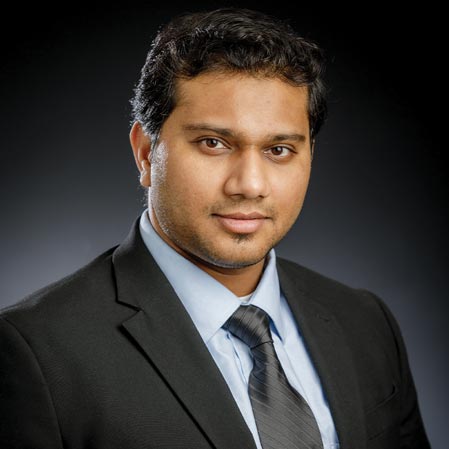
Dr. Ritesh Sachan has been awarded a Faculty Early CAREER Award from the NSF to conduct first-of-its-kind research around high-entropy alloy nanoparticles.
Sachan will receive more than $500,000 over the next five years to further his research proposal, “Leading to Accelerated Discoveries in High-Throughput Ultrafast Laser-Driven Processing of High Entropy Alloy Nanoparticles,” an area that is mostly undiscovered territory.
“I am honored to get this award,” said Sachan, an assistant professor in the mechanical and aerospace engineering department. “It is very prestigious and highly regarded among our academic and research peers. It creates a lot of visibility for myself and my research which allows for further funding opportunities and the opportunity for collaboration with others in the field.”
Alloys are used every day. Steel, brass and bronze are all materials primarily comprised of two or three dominant materials. Sachan’s research is focused on the formation and composition of high-entropy alloys that contain at least five different elements or materials in various percentages. These high-entropy alloys could be found to have the same or better characteristics than some of their pure or traditional alloy counterparts.
These nanoparticles are created by firing a laser through a thin film of each composite material which causes the film to break, shrivel and eventually create nanoparticles that can be tested.
The predominant application of these materials is catalysis for energy production. These processes tend to use expensive or scarce materials, whereas this research could find a new material that is just as effective but composed of more cost-effective and abundant elements.
“Long-term, cost effectiveness is the biggest benefit,” Sachan said. “Right now, the most popular catalyst is platinum, which is very expensive. However, if you can replace that with new materials made of nickel, cobalt, etc. you may still be able to yield the effectiveness of platinum, but at a much lower cost.”
However, the product may not be the only groundbreaking aspect of Sachan’s research. While using laser-driven production methods is not a new concept, the adaptation of that method to the production of high-entropy nanoparticles will require original approaches and methodologies based on well-founded production methods.
“We are performing foundational research,” Sachan said. “New materials may not be the only product of this research, but the methods and procedures we use along the way could be transformational to this area of research.”
Sachan will be conducting fundamental research in novel nanoparticle composition and its benefits, as well as using new methods to review and understand the microstructure of these nanoparticles. For example, he will be utilizing 4D STEM (4D scanning transmission electron microscopy) techniques coupled with machine learning to identify and understand the structural properties of these nanoparticles.
“This research is super exciting,” Sachan said. “The NSF labeled this proposal ‘high risk, high reward’ because we are the one of the first to venture into this particular area of research. It is both exciting and intimidating because of the unknowns.”
While the outcome of the research is unknown, the researcher remains unfazed by the challenges that lie ahead.
“It is exciting because we have a pathway forward,” Sachan said. “We know the steps we are going to take. Whether it is successful or not remains to be seen, but it will be an interesting journey.”
Photos: Gary Lawson
Story by: Jeff Hopper | IMPACT Magazine
